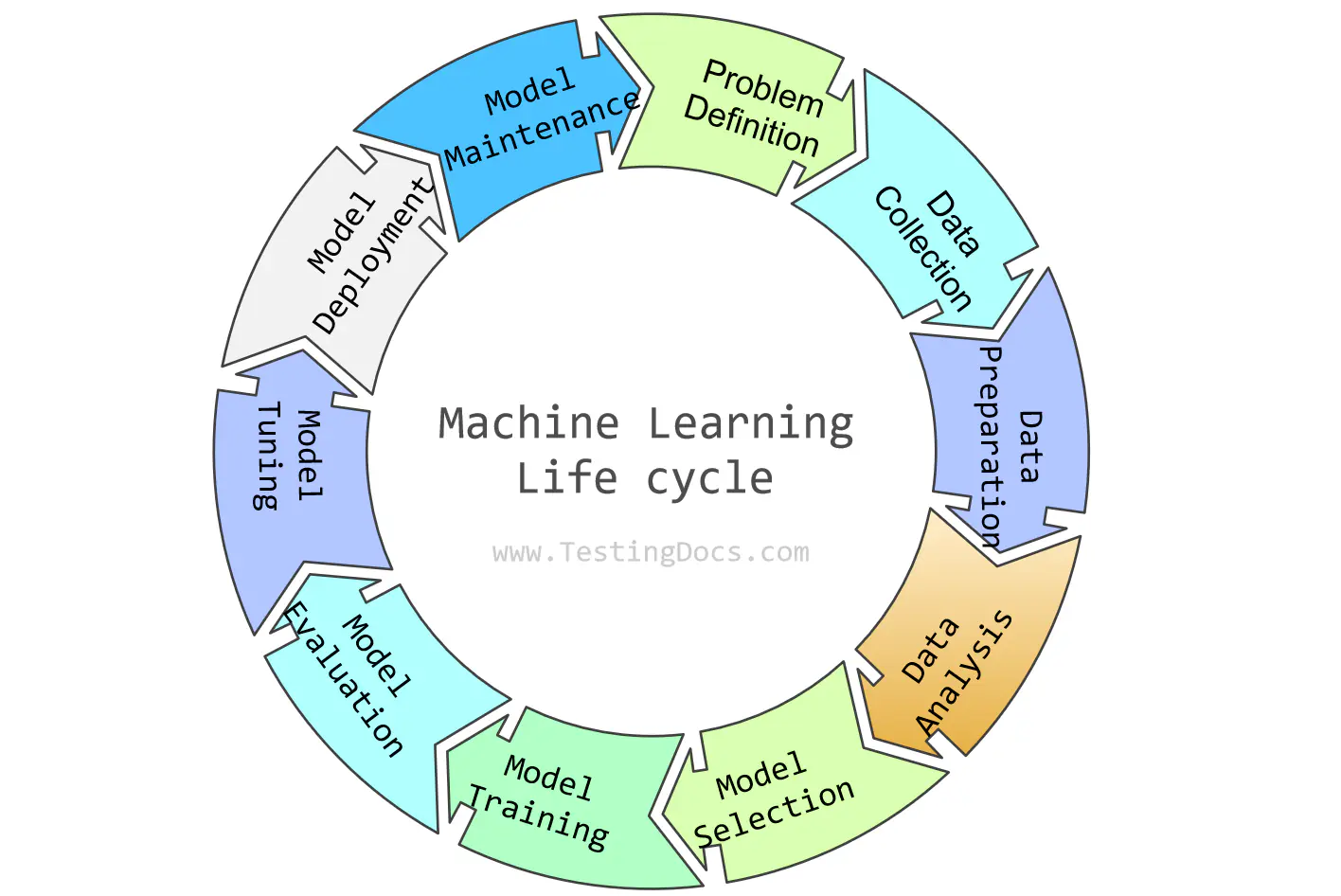Machine Learning Life cycle
Overview
The machine learning life cycle is the end-to-end process of developing, deploying, and maintaining the ML model. ( Machine Learning model)
Machine Learning Life cycle
It involves several phases that are as follows:
- Problem Definition
- Data Collection
- Data Preparation
- Data Analysis
- Model Selection
- Model Training
- Model Evaluation
- Model Tuning
- Model Deployment
- Monitoring/ Maintenance
Problem definition
This phase involves understanding the business problem the model is trying to solve and framing it as a machine-learning task. It’s essential to clearly define the problem the model aims to solve and the objectives and success criteria.
Data collection
In this phase the relevant data is gathered from various sources, including files, databases, APIs, or other repositories. Data collection also involves ensuring the quality and reliability of the data, which will be used to train and evaluate the model.

Data Preparation
Raw data is mostly not suitable for ML algorithms. This phase involves preprocessing the data, which may include cleaning, extracting, normalization, feature engineering, handling missing values, etc. Cleaning and converting raw data into a format suitable for data analysis.
Data Analysis
This phase involves analyzing and visualizing the data to gain insights into its characteristics and relationships. This step helps understand the data’s patterns, correlations, and potential biases.
Model Selection
In this phase, suitable ML algorithms are selected based on the problem definition and the nature of the data. This could involve experimentation with various algorithms to find the one that best fits the problem.
Model Training
In this phase, the selected model is trained on the prepared data. The training involves feeding the algorithm with input data and corresponding target labels to learn patterns and relationships.
Model Evaluation
Once the model is trained, it must be evaluated to assess its performance. This involves using evaluation metrics appropriate for the problem, such as accuracy, precision, recall, F1-score, or others.
Model Tuning
Based on the model evaluation results, the model may need to be fine-tuned. This could involve adjusting hyperparameters, trying different algorithms, or modifying the feature set.
Model Deployment
After the model is trained and tuned to satisfactory performance, it’s deployed into the production environment. Deployment also involves integrating the model into existing systems or applications. The production environment is the live real-world environment where the model predicts new, unseen data.
Monitoring/Maintenance: Once deployed, the model must be monitored continuously to ensure it performs as expected. This involves tracking performance metrics, detecting drift in data distribution, and updating the model periodically to adapt to changing conditions or requirements.
The machine learning life cycle is iterative, not a one-time process. Models may need to be retrained, fine-tuned, or replaced as new data becomes available or as the business requirements evolve.





